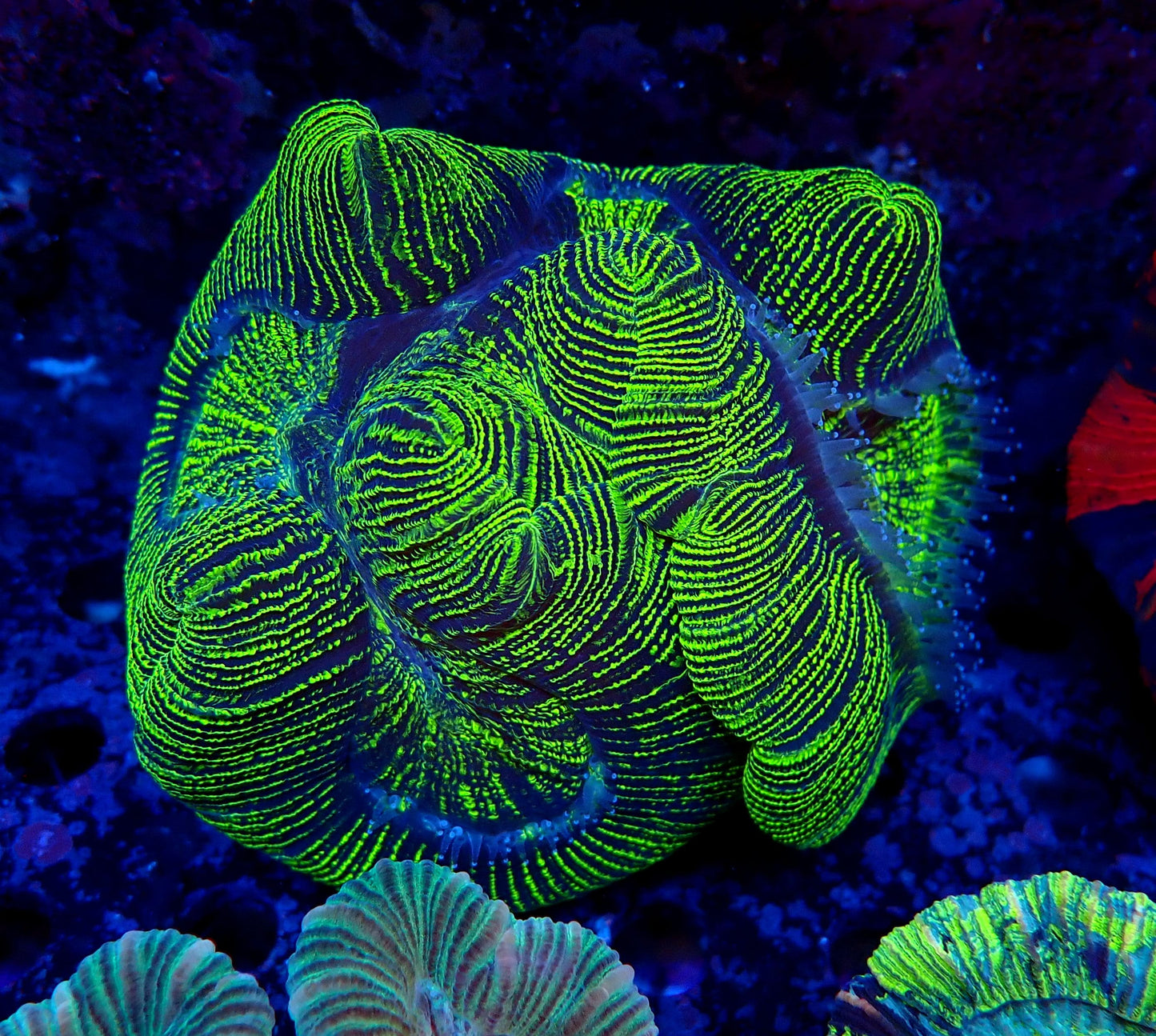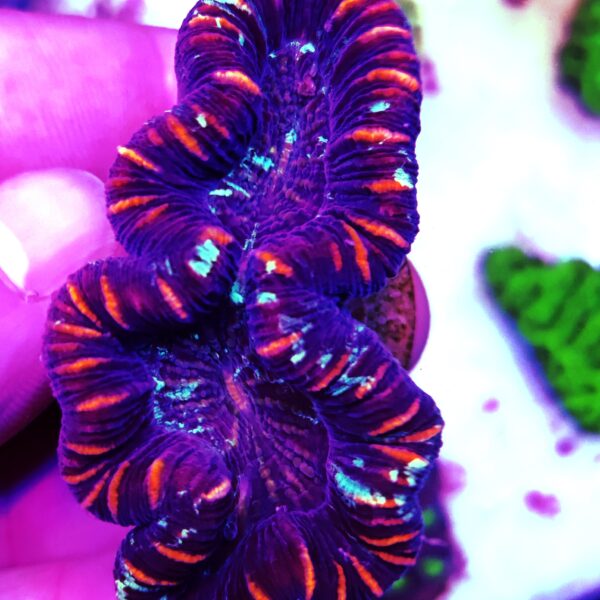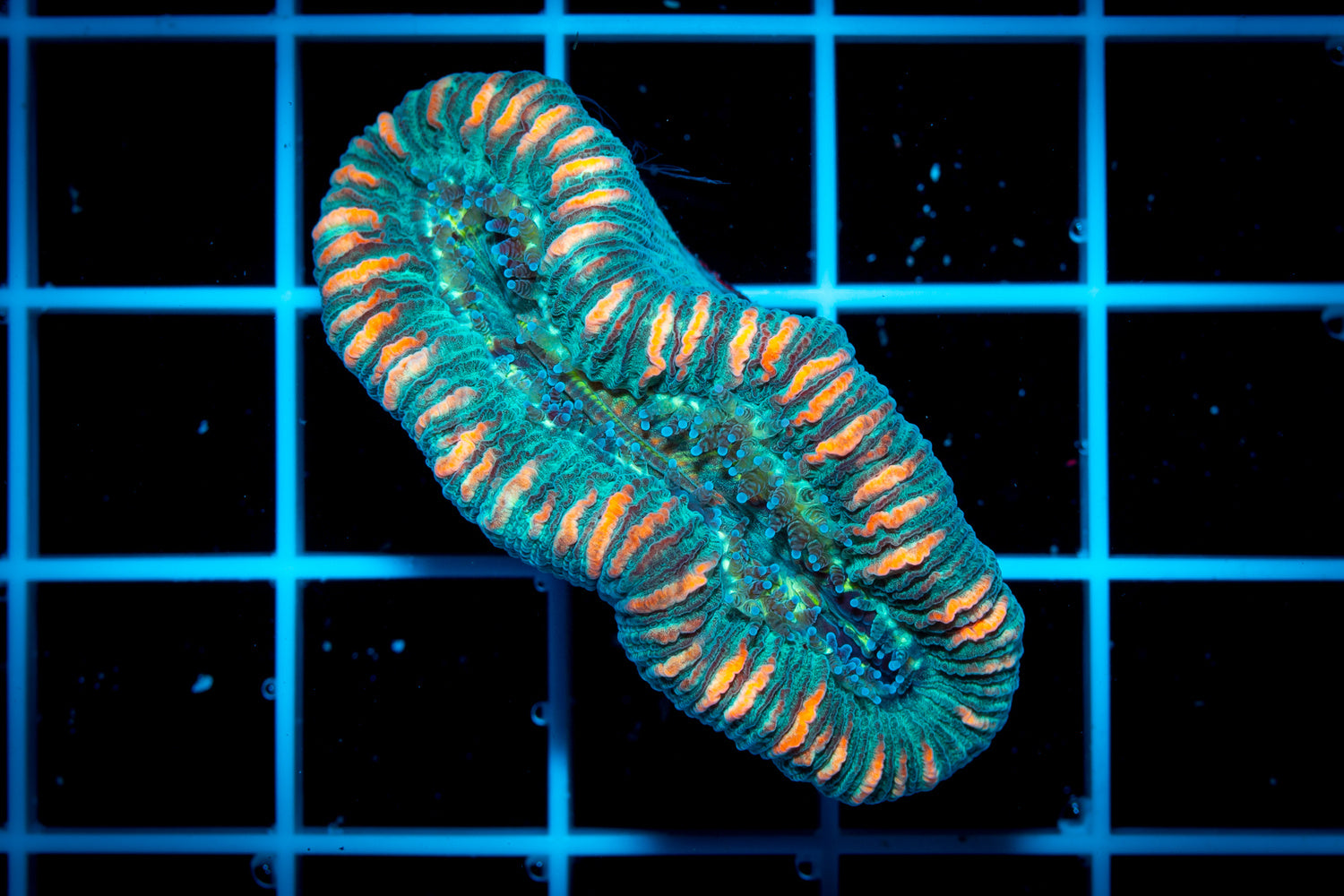Open Brain Corals (Trachyphillia sp.)
Open Brain Corals (Trachyphillia sp.)
Shipping - If ordering more than 1 assorted of the same variety, staff will ensure different pattern/colour. Size variances apply.
Trachyphyllia are normally a single large polyp. On occasion you do find colonies that consist of one larger colony and then what appears to be daughter colonies surrounding it. This looks as though the coral may be ‘budding’ which is an asexual reproduction method but that is probably not what is going on here. What is actually happening is during the coral spawning events you will get a ‘stray spawn’ landing and settling on an existing colony. When they grow up it looks like a double or triple-headed Trachy. For whatever reason these smaller colonies are frequently seen from Trachyphyllia imported from the West Coast of Australia. The East coast of Australia has some of the most amazing and huge multicolored show pieces and Indonesia tends to have smaller colonies available again in really striking colors. There is a huge range in the skeletal growth and you can generally tell from the appearance of a colony where it was collected from.
Trachyphyllia are one of the most highly desired and prized corals among collectors of large polyp stony corals due in large part to their diverse coloration and the intensity of those colors. There are monochromatic fluorescent green striped colonies but there are also some absolutely stunning rainbow-colored colonies that find their way into the hobby. These show grade colonies can have yellow, red, orange, pink, green, lime colors and come as single mouthed or multi mouthed large folding colonies. Although you don’t hear as much said about Trachyphyllia as say, more popular corals such as Scolymia or Acanthophyllia, I think we can all agree that these corals are every bit as beautiful.
Low Light
Low light translates to about 30-50 PAR
Medium Light
Medium Light is between 50-150 PAR
Trachyphyllia appreciate low to medium flow. There are two things that I am looking to accomplish with flow for this coral. The first is to give it enough flow to keep it clean. Detritus build-up can cause the coral to die back where it collects. Providing elevated flow around the coral can prevent this accumulation. Even moderate flow can serve to keep the coral clean as the coral does a good job of slugging off debris that settle on it.
You will know if you are overdoing it if the flow is slamming one side of the coral and it is drawn tight to the skeleton all the time. If this sort of flow isn’t adjusted it can cause the coral to die as the tissue will rub against the skeleton causing damage.
Providing periodic low flow or even zero flow is beneficial for this coral for the purposes of feeding.
Share




















